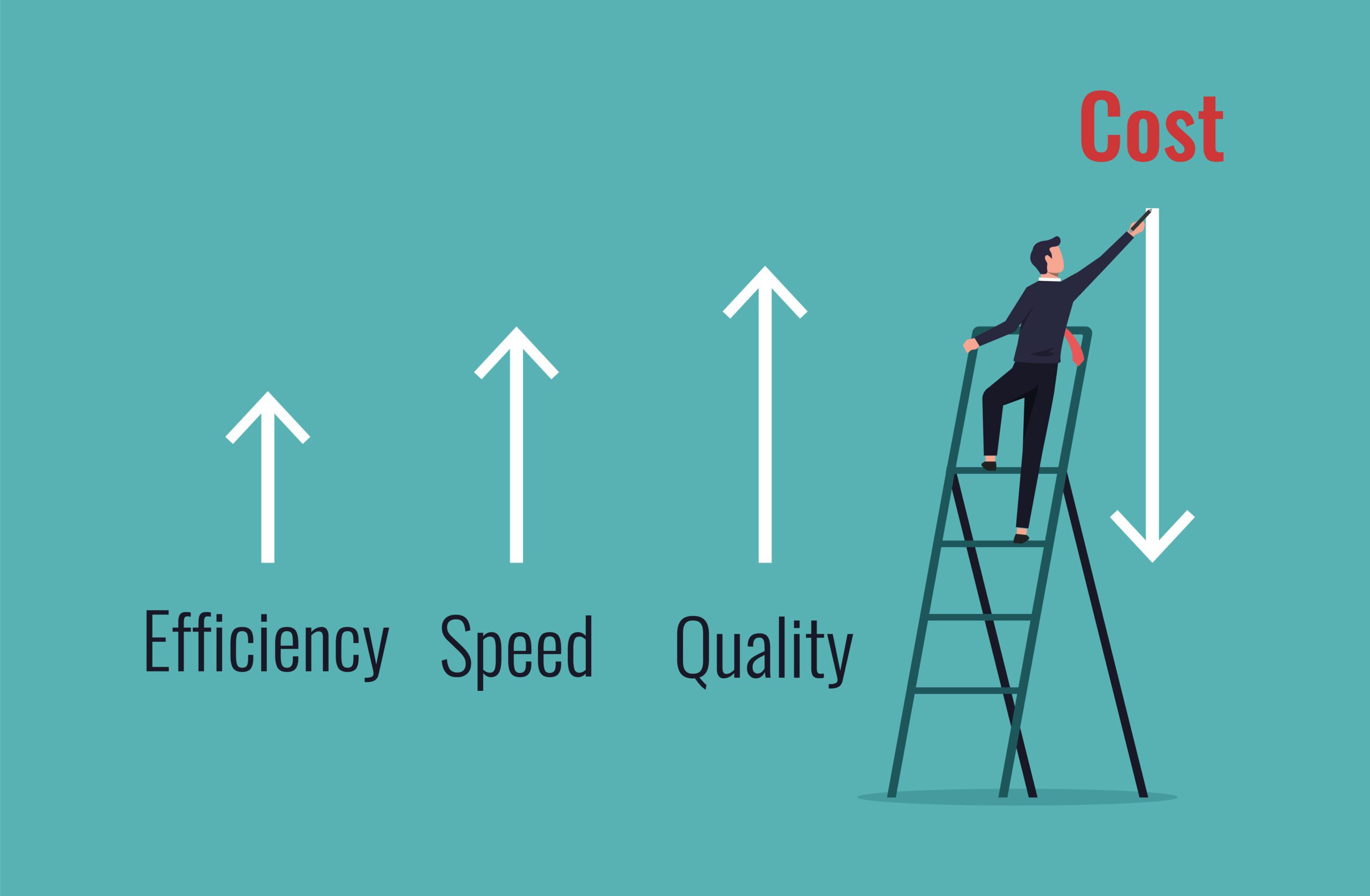HealthEdge has identified five key attributes that drive digital payers, enabling them to rise above the competition and lead the way to better outcomes across the entire healthcare delivery system.
Digital Health Payers focus on:
- Improving end-user and member centricity
- Achieving higher levels of quality
- Increasing transparency
- Advancing customer service
- Reducing transaction costs
In this five-part blog post series, we’re diving deeper into each attribute, delivering resources, information, and insights to enable health plans to transform into digital health payers. As we continue the conversation around what it means to be a digital payer, this discussion focuses on reducing transaction costs.
Constantly Reducing Transaction Costs
Transaction costs are a true indicator of the level of efficiency that exists within a health plan. Typically, the higher the costs, the lower the efficiencies. In HealthEdge’s Annual Market Survey of more than 300 health plan leaders, managing costs and operational efficiencies topped the charts as this year’s biggest challenges leaders are facing.
According to McKinsey & Company, “The rising cost of claims and the complexity of claims management are among the most pressing challenges health insurance companies and other private payers face today. Digitizing every step of the claims process, from data input to payment, has the potential to streamline claims management, as well as boost its efficiency and accuracy. When done right, the result can be both lower costs and better customer experiences.1”
Digital payers are in tune with the challenges driving the costs of transactions and are focused on identifying new, innovative solutions to reduce them.
Identifying The Causes
There are a variety of factors to blame for rising costs – from skyrocketing claims volumes following the pandemic, to rising costs due to long delays in care, and outdated systems that require manual intervention and hefty investments to meet industry demands. As workforce shortages continue to plague the market, health plan leaders are evaluating every opportunity to reduce costs and administrative burdens.
In the 2022 Annual Market Survey [link to published white paper] conducted by HealthEdge each year, more than 300 health plan leaders revealed that transaction costs continue to rise. In the study, respondents indicated the average cost per claim increased this year, with 58% reporting that their average cost per claim is $8 or more, compared to 44% in 2021. However, according to the most recent CAQH Index, adoption of electronic claims submission is high – at 97%.2 So, if plans and providers already have electronic systems in place, what is driving the increase in transaction costs?
Transaction Cost Drivers
Experts indicate the increase in transaction costs is partially being driven by inaccurate claim payments and manual rework. In fact, only 26% of respondents said that greater than 80% of their claims were paid accurately the first time. Both result from disparate systems involved in the process and the complexity of continuous changes associated with claims processing. This occurs even with electronic solutions in place.
The fact that many organizations are using multiple tools to manage claims, all with limited connectivity, is to blame. When updates are made – which frequently happens – chaos and inaccuracies are likely to follow with outdated, disconnected systems. For example, providers, government agencies, state programs, and Medicare make pricing updates at different times. Each solution from a different vendor involved in claims management is also updated at various times, further complicating the process. That’s why using multiple, outdated technology systems can increase costs.
Recent cost increases have also been driven by new and added complexities to claims management. Not only is pricing continuously updated, but drastic changes in healthcare over the past two years have introduced new challenges. According to the most recent CAQH Index, the rapid increase in use of telehealth and the introduction of COVID-19 further exacerbated transaction complexity. The 2021 CAQH Index explained, “Providers had to submit new information related to telehealth and COVID-19 and often engaged extensively with health plans using manual methods which increased the time and cost to conduct a manual transaction.”2
How Digital Payers Reduce Transaction Costs
Digital payers are laser-focused on these problems and are constantly seeking new ways to reduce costs by using modern technology to automate more of the claims processing workflows and eliminating many of the time-consuming, error-prone, manual processes they’ve typically followed. By doing so, they are able to eliminate the IT and business burdens associated with bolting together multiple, disconnected solutions with a single, fully automated platform to achieve payment accuracy.
A single digital platform enables digital payers to:
- Centralize data so it can be shared across the healthcare ecosystem, minimizing the impact of frequent updates
- Consolidate claims processes and streamline workflows to save time and reduce errors
- Eliminate limitations associated with linear claims processing, allowing full automation, and minimizing manual intervention
As a result, digital payers ensure claims are paid accurately the first time, which in turn, reduces rework and improves productivity that leads to lower transaction costs.
To learn more about how HealthEdge can help your organization lower transaction costs, visit www.healthedge.com or email [email protected].
1McKinsey & Company. For better healthcare claims management think “digital first.” June 19, 2019.
2 2021 CAQH Index. Working Together: Advances in Automation During Unprecedented Times






